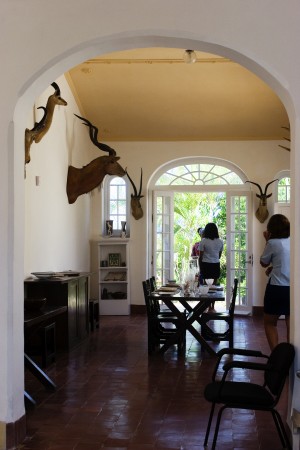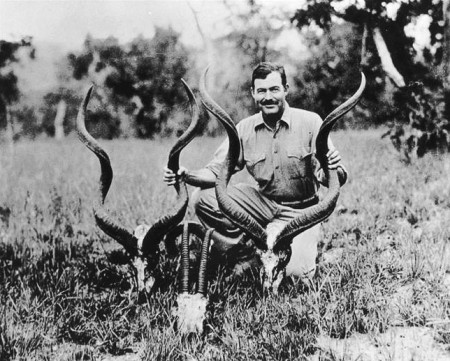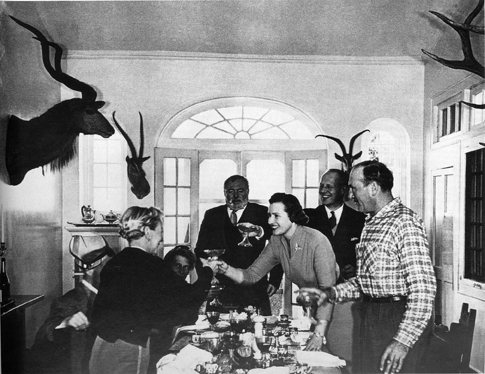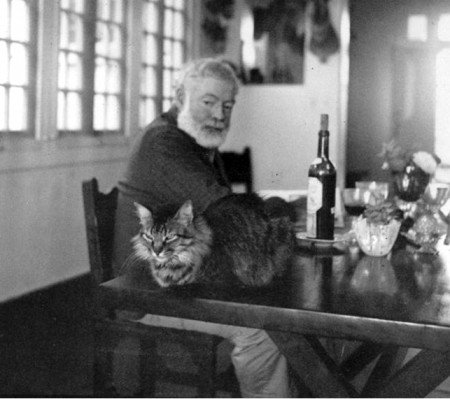Chris and I had both heard the story a couple of times before. How Mussolini had so admired one of Hemingway’s trophy heads, hanging on the wall in the dining room at Finca Vigía, that he’d sent Hemingway a blank check and told him to write in whatever amount he liked for the animal that Hem had shot while on safari in what was then called Tanganyika in 1934.
Hemingway was no fan of Il Duce who he’d derided in print on more than one occasion (a Toronto Daily Star article from 1923, penned by Hemingway while living in Paris, was titled “Mussolini: Biggest Bluff in Europe”). So when Hem received the fascist dictator’s blank check he wrote on it, “Shoot your own” and sent it back.
The question, as we stood in front of the dining room looking at the many heads on the wall, was which animal was Mussolini so covetous of. I thought it was perhaps the oryx which is sometimes called the African unicorn because in profile it looks like it has a single horn. Chris was certain it was a wildebeest. Of course, we were both wrong. It was the kudu, which Hemingway wrote about bagging, in only a pseudo-fictitious way, in Green Hills of Africa (1935).
These three photos reveal a lot about Hemingway, I think. The first, above, from 1934, shows the middle-aged author smiling and looking tickled-pink with the same kudu antlers that eventually ended up on his dining room wall in Cuba.
You can see the kudu head, on the left, in this second photo, circa 1955; his fourth and last wife, Mary, with back to us, is toasting their guests while Hemingway looks on rather impassively (this shot was taken a year or so after he’d sustained serious head injuries from two successive plane crashes while on safari in Africa in 1954; it was also the beginning of the end, healthwise).
The last shot, undated, of Hemingway sitting at his dining room table with one of the 60-odd cats that roamed Finca Vigía, is a very sad photo, I think. It must have been taken shortly before he and Mary abandoned their Cuban house for good. He looks a big dazed here, his gaze indirect, his shoulders slumped. A man who has given up on life.
Hemingway’s motto in life was always, “One must, after all, endure.” But towards the end of his life, that changed. The end was near and he knew it.
One must, after all, die.





Recent Comments